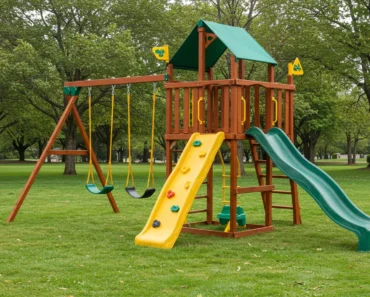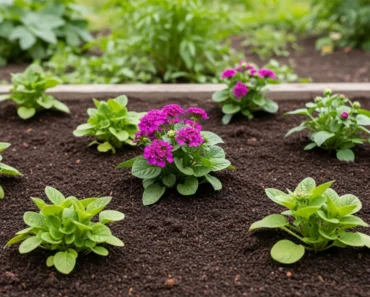Understanding the Essential Role of Pans in Culinary Excellence
The purpose of a pan extends far beyond simply holding food during cooking. This fundamental kitchen tool serves as the critical interface between heat and ingredients, transforming raw materials into flavorful, properly cooked dishes through precise heat control, moisture management, and chemical reactions that create taste and texture.
Understanding the multifaceted purpose of pans revolutionizes your approach to cooking, enabling you to make informed choices about techniques, materials, and applications that deliver consistently superior results. This comprehensive exploration reveals how pans function as precision instruments that control temperature, develop flavors, and create the foundation for culinary success.
The Scientific Foundation of Pan Functionality
The primary purpose of a pan centers on efficient heat transfer and distribution, creating controlled cooking environments that enable precise temperature management across food surfaces. This scientific foundation determines cooking outcomes and distinguishes pans from other cooking methods.
Heat Conduction and Distribution Mechanisms
Pan materials conduct heat at different rates, with copper and aluminum providing rapid heat transfer while cast iron and stainless steel offer superior heat retention. This thermal conductivity directly impacts cooking performance and determines which pan materials suit specific culinary techniques.
Even heat distribution prevents hot spots that cause uneven cooking and burning. High-quality stainless steel pans with aluminum or copper cores provide even heat distribution, ensuring food cooks uniformly. This consistent heating enables predictable cooking results and professional-quality outcomes.
Temperature Control and Precision Cooking
Pans provide immediate temperature feedback through visual and auditory cues, allowing cooks to adjust heat levels for optimal results. The sizzling sounds, oil behavior, and surface reactions indicate proper cooking temperatures for different ingredients.
Temperature control becomes essential for techniques like searing, where high heat creates caramelization, or sauce preparation, where gentle heat prevents breaking and curdling. This precise control distinguishes pan cooking from oven or microwave methods.
Chemical Reactions and Flavor Development
The purpose of a pan includes facilitating Maillard reactions and caramelization that develop complex flavors impossible to achieve through other cooking methods. These chemical transformations occur at specific temperatures that pans maintain effectively.
Surface contact between food and heated pan creates browning reactions that add depth and complexity to simple ingredients. This flavor development represents one of the most important purposes pans serve in modern cooking.
Essential Cooking Functions and Applications
Cooking pans serve as versatile kitchen tools used for various cooking methods such as frying, sautéing, searing, and making sauces, facilitating even heat distribution and efficient cooking. These diverse applications demonstrate the fundamental role pans play in culinary preparation.
High-Heat Cooking Techniques
Searing proteins in pans creates flavorful crusts while maintaining tender interiors. This high-heat application requires pans that can withstand and distribute intense temperatures without warping or creating hot spots.
Stainless steel provides excellent properties for searing and browning due to its high heat tolerance and even heat distribution. This makes certain pan materials specifically suited for high-temperature cooking applications.
Delicate Cooking Applications
Non-stick pans serve essential functions for breakfast preparations since eggs and pancakes perform best on non-stick surfaces, while also providing versatility for searing meats, sautéing vegetables, and making sauces.
Low-heat cooking techniques like gentle scrambling, sauce reduction, and vegetable sautéing require pans that respond quickly to temperature adjustments and provide consistent, moderate heat distribution.
Sauce Creation and Reduction
Pan surfaces facilitate sauce development through deglazing techniques that incorporate fond (browned bits) into liquid preparations. This process creates rich, flavorful sauces that complement the primary dish components.
Reduction techniques concentrate flavors by evaporating moisture while maintaining sauce consistency. Pans provide the wide surface area necessary for effective moisture evaporation and flavor concentration.
Material Properties and Their Specific Purposes
Different pan materials serve distinct purposes based on their thermal properties, durability characteristics, and cooking performance attributes. Understanding these differences helps select appropriate pans for specific culinary goals.
Stainless Steel Applications
Stainless steel pans excel at browning and deglazing applications due to their ability to withstand high temperatures and develop fond effectively. These pans work well with metal utensils and provide durability for frequent use.
The non-reactive nature of stainless steel makes it ideal for cooking acidic ingredients like tomatoes and wine-based sauces without metallic flavors transferring to food. This versatility serves multiple cooking purposes.
Cast Iron Heat Retention
Cast iron pans serve the purpose of maintaining consistent temperatures over extended periods, making them excellent for slow-cooked dishes and recipes requiring steady heat application.
The natural seasoning development in cast iron creates improving non-stick properties over time, while the iron content can provide nutritional benefits to prepared foods. These unique characteristics serve specific cooking purposes.
Non-Stick Convenience Features
Non-stick surfaces serve the purpose of easy food release and simplified cleanup, particularly important for delicate ingredients that tend to stick to traditional surfaces.
Modern ceramic non-stick coatings provide safer alternatives while maintaining the convenience benefits that make these pans essential for specific cooking applications like egg preparation and fish cookery.
Copper Precision Control
Copper pans serve the specialized purpose of providing immediate temperature response, making them ideal for delicate sauce work and temperature-sensitive preparations that require precise heat control.
Professional kitchens value copper for its superior heat conductivity and aesthetic appeal, though the higher maintenance requirements and cost limit their use to specialized applications.
Key Takeaways:
- ✓
The purpose of a pan is to provide controlled heat transfer and distribution for optimal cooking results - ✓
Different materials serve specific purposes based on thermal properties and cooking applications - ✓
Pans facilitate chemical reactions that develop flavors through browning and caramelization - ✓
Temperature precision and control distinguish pan cooking from other cooking methods - ✓
Understanding pan purposes enables better cooking technique selection and material choices
Nutritional and Health Benefits of Pan Cooking
The purpose of a pan extends to providing health benefits through nutrient preservation, controlled fat usage, and safer cooking temperatures that prevent harmful compound formation.
Nutrient Retention Through Controlled Cooking
Pan cooking preserves more vitamins and minerals compared to boiling or steaming methods that leach nutrients into cooking water. The direct heat application and shorter cooking times maintain nutritional density.
Quick sautéing techniques preserve vegetable colors, textures, and heat-sensitive nutrients better than prolonged cooking methods. This nutritional preservation serves an important health purpose.
Controlled Fat and Oil Usage
Pans enable precise control over cooking fat quantities, supporting healthier preparation methods that reduce unnecessary calories while maintaining flavor and texture benefits.
Non-stick surfaces allow minimal or no added fats for certain preparations, while traditional surfaces can drain excess fats during cooking. This control serves important dietary management purposes.
Temperature Safety and Harmful Compound Prevention
Proper pan temperature control prevents the formation of harmful compounds that develop during excessive high-heat cooking. Visual and auditory feedback helps maintain safe cooking temperatures.
Pan cooking allows immediate temperature adjustments that prevent burning and charring, which can create potentially harmful substances. This safety aspect serves an important health protection purpose.
Versatility and Multi-Purpose Applications
Modern pans serve multiple purposes beyond basic cooking, functioning as serving vessels, storage containers, and specialized cooking tools that adapt to various culinary needs.
Stovetop to Oven Transitions
Oven-safe pans serve the dual purpose of starting dishes on stovetops and finishing them in ovens, enabling techniques like pan-roasting that combine multiple cooking methods for optimal results.
This versatility eliminates the need for transferring food between cookware, reducing cleanup while providing better heat control throughout the cooking process.
Presentation and Serving Functions
Attractive pans serve presentation purposes by allowing direct service from cooking vessel to table. Cast iron and copper pans particularly excel at maintaining temperature while providing appealing presentation.
Family-style serving from pans creates interactive dining experiences while keeping food at optimal serving temperatures throughout meals.
Storage and Meal Prep Applications
Certain pan types serve food storage purposes, allowing prepared dishes to remain in cooking vessels for reheating or meal prep applications.
This multi-purpose functionality reduces kitchen equipment needs while streamlining cooking and storage processes for busy households.
Professional Techniques and Advanced Applications
The purpose of a pan in professional kitchens extends to advanced techniques that require precise control and specialized skills developed through proper understanding and practice.
Fond Development and Sauce Building
Professional cooks utilize pan surfaces to develop fond (browned bits) that become the foundation for complex sauces. This technique transforms simple ingredients into restaurant-quality flavor profiles.
Deglazing techniques dissolve fond with liquids, creating instant sauce bases that complement main ingredients perfectly. This professional application demonstrates advanced pan purposes.
Temperature Gradient Management
Advanced cooks use pan positioning and heat adjustment to create temperature gradients that cook different ingredients simultaneously at optimal rates.
This technique enables complex dish preparation in single pans, reducing cooking time while maintaining individual ingredient integrity and proper doneness levels.
Emulsification and Molecular Techniques
Specialized pan applications include emulsification techniques for butter mounting, cream sauce preparation, and modern molecular cooking methods that require precise temperature control.
These advanced techniques demonstrate how understanding pan purposes enables sophisticated cooking methods that elevate home cooking to professional standards.
Economic and Practical Benefits
The purpose of a pan includes providing economic advantages through versatility, durability, and efficiency that make them essential kitchen investments for home cooks.
Multi-Function Cost Efficiency
Quality pans serve multiple cooking purposes, reducing the need for specialized equipment while providing superior results across various cooking applications.
The versatility of pans makes them cost-effective alternatives to single-purpose appliances, providing better value and space efficiency for home kitchens.
Durability and Longevity
Well-made pans serve cooking purposes for decades with proper care, making them long-term investments that provide consistent performance throughout their lifespans.
The durability of quality pans reduces replacement costs and provides reliable cooking performance that improves with proper seasoning and maintenance.
Energy Efficiency
Pans provide efficient heat transfer that reduces cooking times and energy consumption compared to oven cooking for many applications.
The direct heat application and responsive temperature control minimize energy waste while providing faster cooking results for most everyday preparations.
Cultural and Historical Significance
Understanding the purpose of a pan includes recognizing its cultural importance and historical evolution that shaped modern cooking techniques and culinary traditions worldwide.
Cultural Cooking Traditions
Different cultures developed specialized pan types and techniques that serve specific purposes within traditional cooking methods and regional cuisines.
Woks, tagines, and comal serve specialized cultural purposes while demonstrating how pan design reflects cooking needs and ingredient availability in different regions.
Evolution of Cooking Technology
Modern pan materials and designs evolved from centuries of experimentation aimed at improving cooking performance, safety, and convenience for home cooks.
Understanding this evolution helps appreciate how current pan technology serves sophisticated purposes that address historical cooking challenges and limitations.
Social and Family Functions
Pans serve social purposes by enabling shared cooking experiences and family meal preparation that strengthen relationships through collaborative food creation.
The communal aspects of pan cooking create opportunities for skill transfer between generations while maintaining cultural food traditions.
Frequently Asked Questions
What is the primary purpose of using a pan instead of other cooking methods?
The primary purpose of a pan is to provide direct, controllable heat contact that enables browning, searing, and flavor development through Maillard reactions. Pans offer immediate temperature feedback and adjustment capabilities that other cooking methods cannot match, making them essential for techniques requiring precise heat control and surface contact.
How does the material of a pan affect its purpose and cooking results?
Pan materials serve different purposes based on their thermal conductivity and heat retention properties. Copper provides rapid temperature response for delicate sauces, stainless steel offers durability and versatility for browning, cast iron maintains steady heat for slow cooking, and non-stick surfaces serve the purpose of easy food release for delicate items. Each material optimizes specific cooking applications.
What makes pans essential for developing complex flavors in cooking?
Pans serve the essential purpose of facilitating browning reactions and caramelization that create complex flavors impossible to achieve through boiling or steaming. The direct surface contact and controlled temperatures enable Maillard reactions, fond development, and deglazing techniques that build layered flavors. These chemical processes require the specific conditions that pans provide through heat concentration and surface interaction.
Can one pan serve multiple cooking purposes effectively?
Yes, a well-chosen pan can serve multiple cooking purposes effectively, though some specialization improves performance for specific tasks. A quality stainless steel or cast iron pan can handle searing, sautéing, sauce-making, and even oven finishing. However, having specialized pans like non-stick for delicate foods and heavy-bottomed pans for sauce work optimizes results for different cooking purposes.
What health benefits does pan cooking serve compared to other methods?
Pan cooking serves important health purposes by preserving nutrients better than water-based cooking methods, allowing precise control over cooking fats, and preventing harmful compound formation through temperature control. The shorter cooking times maintain vitamin content, while visible temperature feedback prevents overheating that creates potentially harmful substances. Pan cooking also enables fat drainage and portion control that supports healthier cooking practices.
Final Thoughts
Understanding the purpose of a pan transforms your approach to cooking by revealing how this essential tool serves as the foundation for culinary success. From providing precise heat control and enabling complex flavor development to offering health benefits and economic efficiency, pans serve multifaceted purposes that make them indispensable in modern kitchens. The science behind heat distribution, the versatility across cooking techniques, and the cultural significance of pan cooking demonstrate why mastering pan usage remains fundamental to culinary skill development. Professional insights into cookware science and material property research continue to advance our understanding of how pans serve their essential purposes in creating exceptional cooking results.


